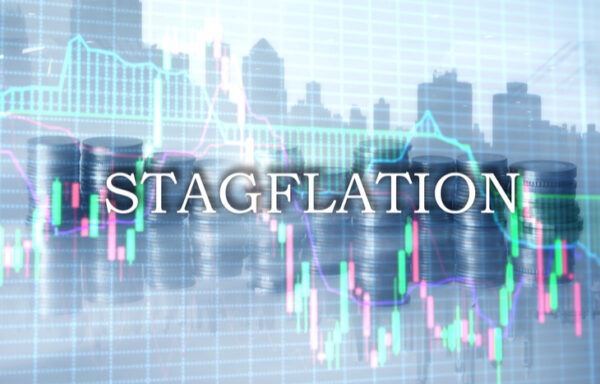Fundamental Trading: A Focus on Companies and Events
Many trading styles have roots in technical analysis. While not opposite, fundamental trading skews more toward the foundational metrics of a company. Fundamental traders look at economic and financial factors above all else. They seek to understand how a company is performing within the market. Often, this means looking at much larger variables than a candlestick chart can show.
Fundamental trading involves comprehensive review of a company. After measuring it against key metrics, the trader will decide whether it’s over- or under-valued. Then, they’ll open a position with a target price based on the market sentiment. This fair-value price is the benchmark for their investing thesis.

Fundamental Trading vs. Buy-and-Hold
On the surface, fundamental trading sounds a lot like buy-and-hold investing. In many ways the two are similar. The chief difference is that buy-and-hold investors weather all levels of price performance over a time period. They don’t care if the price of a security fluctuates over a 10-year span. Fundamental traders will evaluate the fair-value price of a security often to verify their thesis over time.
Fundamental trading is more specific than buy-and-hold. A trader may see the fair value price of a security as $41, when it’s currently valued at $35. When it reaches or exceeds this target, the fundamental trader will sell. Or, if there’s reversal action, a fundamental trader will recalculate their fair-value price and adjust their thesis. Depending on the timeline, that can occur over days, weeks or months.
For fundamental traders, fair-value comes from two realms: quantifiable metrics and qualitative metrics.
Quantifiable Metrics Measured by Fundamentalists
Every fundamental trader will have their own set of metrics for evaluating fair-value price. For example, here’s a look at some of the most common, powerful metrics of a company:
- Price-to-book ratio (P/B): This is a great starting point in quantifying a stock. It’s simply the assets and liabilities of a company vs. its market cap. If market cap is higher, the stock is over-valued; if it’s lower, the stock is under-valued.
- Debt-to-equity ratio (D/E): This metric shows the portion of debt vs. equity the company has in its assets. The lower D/E, the less the company relies on debt to finance its profitable endeavors.
- Free cash flow: This is the amount of cash a company has after deducting operating expenditures and capital expenditures. Higher free cash flow correlates to better profitability for shareholders.
- Price-to-earnings ratio (P/E): This is calculated by dividing share price by earning per share. High P/E indicates overvaluation; low P/E indicates it’s undervalued. Forward and trailing P/E yield additional insight on trends.
- EBITDA: This is Earnings Before Interest, Taxes, Depreciation and Amortization. It’s a GAAP metric used to show net income for profitable companies. It measures the company’s overall financial performance.
There are dozens more financial (quantifiable) metrics fundamental traders use to price companies. The goal is to form a relative picture of whether the company in question is over- or under-valued against these different metrics. Discrepancies signal opportunity for fundamental traders.
Qualitative Metrics Fundamentalists Consider
Beyond the balance sheet, fundamental traders need to look at several variables of a security. For example, if a company has stellar financials but is mired by lawsuits and legal probes, the price will reflect this. Fundamental traders care about this because it affects the real value of the security. Here’s a look at some of the qualitative metrics fundamentalists consider:
- Industry and sector: If a segment of the market faces headwinds, a fundamental trader will factor these into under-valuation. Likewise, if there’s excessive chatter surrounding an industry, it may play into over-valuation.
- Moat: How likely is the company to face disruption? Companies with a strong moat are less likely to face volatility due to competitors or market changes. This is a common metric in sectors like energy and industrials.
- Management: A well-run company will weather hardship better and make the most of opportunities. Fundamental investors will weigh governance in their evaluation of a company’s fair value.
- Sentiment: Investors tend not to value companies correctly in the face of extraneous circumstances. Conflicts with shareholders, legal matters, c-suite turnover and more will all drive a share price down.
Fundamental traders will also observe the bullish or bearish tendencies of a market. Is news of lower interest rates driving prices up? Are global supply chain disruptions tanking prices? Bullish and bearish market trends are the most fundamental of observations.
Fundamental Trading Strategies That Work
Fundamental investors have the luxury of a longer timeline to investigate companies. Traders may only have a few days to capitalize on an under- or over-valued security. Most traders will have stock screening programs that calculate quantifiable metrics for them. For everything else, you have to adopt buy-sell strategies.
- Earnings: Fundamental traders have ample opportunity to open and close positions after earnings reports. This is when investor sentiment may be extremely high or low. With a fair-value estimate, fundamental investors can easily identify overzealous movement.
- Stock splits: During a stock split, a company’s market cap doesn’t change. However, the number of shares increases. This often incites a wave of new investment. Therefore, a fundamental trader can capitalize on with a fair-value assessment.
- Analyst grades: Analyst upgrades or downgrades in a stock cause movement. If the analyst grade differs from the fundamental trader’s fair value target, there’s a potential to capitalize on market movement.
- M&A activity: Mergers and acquisitions typically include stock deals, which fuel speculation. Pricing fair value can anchor a price so fundamental investors don’t get wrapped up in wild speculation.
The best strategy for fundamental investors is to define a series of quantifiable and qualitative metrics and to trade against them. The edge of fundamental investors always comes via a fair-value thesis.
The Bottom Line on Fundamental Trading
Are you looking to build a portfolio that sets you up for retirement? If so, sign up for the Wealthy Retirement e-letter today. This newsletters givers you tips and retirement strategies that help you build wealth through the stock market.
Fundamental trading takes a lot of work. But it is perhaps the most consistent trading approach. It differs from technical investing in that it assumes to attach a fair value to the security. This differs from charting action at the current price. It’s one of the best ways for new traders to get a handle on market movement and sentiment as they seek profits.
[adzerk-get-ad zone="245143" size="4"]




